October 2016 - KT Tunstall

したのビデオを再生してポッドキャストを聞くことができます

したのビデオを再生してポッドキャストを聞くことができます
内容
・ 3 songs from KT Tunstall's new CD “KIN”.
・ Turned A Light On・ KIN ・ Evil Eye
KT Tunstall のCDを購入する (Amazon Japan)
KT Tunstall の曲をダウンロードする(iTunes Japan)
・monologue about Chokai・Tobishima Geopark

遊佐町 "Sea to Summit" event (リンク)

・newspaper reading

Why the movie of body-swapping teenagers has gripped Japan
BBC Website 27 September 2016
The Japanese film Your Name (called Kimi No Na W in Japanese) has made history by becoming the first animation which was not made by the legendary Studio Ghibli to earn more than 10 billion yen (£76m; $98m) in a month.
But why is it so popular? Here are 6 reasons.
1. It is a body-swapping fantasy
Your Name, also known as Kimi no Na wa in Japanese, is a body-swapping fantasy with two teenagers at its heart.
It is based on a novel and tells the story of Mitsuha, a female high school student in a rural Japanese town, and Taki, a male high school student in central Tokyo.
Mitsuha starts dreaming of herself as a young man. Taki also begins seeing himself through the eyes of a female student in the countryside.
The rest of the movie explores their body-swap and their journey involves time travel as well as disastrous deadly comets.
2. Your Name mirrors the boy-girl swaps found in old Japanese tales
Director Makoto Shinkai was inspired by a classic Japanese 12th Century story, Torikaebaya Monogatari, which is about a brother and sister whose gender is switched by their parents of their personality.
And it's common in modern Japanese culture too.
Tenkousei is a Japanese film made in 1982 also about a teenage boy and girl who swapped bodies when they fell down some stairs at a temple. A father and daughter also switch bodies in a 2007 TV drama Papa to Musume no Nanokakan
3. It captures the melancholy of teenage dreaming
Your Name touches on universal themes such as coming of age, growing up and the struggle to assert your identity in a confusing world.
4. It is a reminder of the earthquake that changed the country
It also draws upon the experience of Japan after the deadly 2011 earthquake, which claimed 16,000 lives. Shinkai said he used the film to reflect a sentiment that many, including himself, shared - that a similar disaster could strike at any moment.
"You never know when Tokyo could become like this," the character Taki says at one point in the movie.
5. Fans are visiting its stunning locations
The film is also appreciated for its beautiful graphics, many of which are real-life locations.
"I finally watched Your Name. The story, acting and music were all good but most of all I was overwhelmed by the beauty of [the] images. Each location was amazing," said one user on Twitter.
Other users posted pictures of real-life locations that the film showed, with fans visiting locations such as Shinkai's home town in Nagano Prefecture, Gifu prefecture and even Tokyo.
6. Hope for the next generation of mainstream Japanese animation
Some people have called Shinkai the next Hayao Miyazaki, whose name is almost synonymous with anime and who helped bring Japanese animation to a broad global audience.
Miyazaki directed award-winning hits such as Spirited Away, Princess Mononoke and Howl's Moving Castle during his time with Studio Ghibli, all of which broke the 10bn yen mark.
"Shinkai is on his way to Miyazaki status with Kimi no Na wa," said one Twitter user."What they have in common is the ability to take audiences through a journey and experience, which I believe is the ultimate goal of any artist."
本記事へ
・ Turned A Light On・ KIN ・ Evil Eye
KT Tunstall のCDを購入する (Amazon Japan)
KT Tunstall の曲をダウンロードする(iTunes Japan)
・monologue about Chokai・Tobishima Geopark

遊佐町 "Sea to Summit" event (リンク)

・newspaper reading

Why the movie of body-swapping teenagers has gripped Japan
BBC Website 27 September 2016
The Japanese film Your Name (called Kimi No Na W in Japanese) has made history by becoming the first animation which was not made by the legendary Studio Ghibli to earn more than 10 billion yen (£76m; $98m) in a month.
But why is it so popular? Here are 6 reasons.
1. It is a body-swapping fantasy
Your Name, also known as Kimi no Na wa in Japanese, is a body-swapping fantasy with two teenagers at its heart.
It is based on a novel and tells the story of Mitsuha, a female high school student in a rural Japanese town, and Taki, a male high school student in central Tokyo.
Mitsuha starts dreaming of herself as a young man. Taki also begins seeing himself through the eyes of a female student in the countryside.
The rest of the movie explores their body-swap and their journey involves time travel as well as disastrous deadly comets.
2. Your Name mirrors the boy-girl swaps found in old Japanese tales
Director Makoto Shinkai was inspired by a classic Japanese 12th Century story, Torikaebaya Monogatari, which is about a brother and sister whose gender is switched by their parents of their personality.
And it's common in modern Japanese culture too.
Tenkousei is a Japanese film made in 1982 also about a teenage boy and girl who swapped bodies when they fell down some stairs at a temple. A father and daughter also switch bodies in a 2007 TV drama Papa to Musume no Nanokakan
3. It captures the melancholy of teenage dreaming
Your Name touches on universal themes such as coming of age, growing up and the struggle to assert your identity in a confusing world.
4. It is a reminder of the earthquake that changed the country
It also draws upon the experience of Japan after the deadly 2011 earthquake, which claimed 16,000 lives. Shinkai said he used the film to reflect a sentiment that many, including himself, shared - that a similar disaster could strike at any moment.
"You never know when Tokyo could become like this," the character Taki says at one point in the movie.
5. Fans are visiting its stunning locations
The film is also appreciated for its beautiful graphics, many of which are real-life locations.
"I finally watched Your Name. The story, acting and music were all good but most of all I was overwhelmed by the beauty of [the] images. Each location was amazing," said one user on Twitter.
Other users posted pictures of real-life locations that the film showed, with fans visiting locations such as Shinkai's home town in Nagano Prefecture, Gifu prefecture and even Tokyo.
6. Hope for the next generation of mainstream Japanese animation
Some people have called Shinkai the next Hayao Miyazaki, whose name is almost synonymous with anime and who helped bring Japanese animation to a broad global audience.
Miyazaki directed award-winning hits such as Spirited Away, Princess Mononoke and Howl's Moving Castle during his time with Studio Ghibli, all of which broke the 10bn yen mark.
"Shinkai is on his way to Miyazaki status with Kimi no Na wa," said one Twitter user."What they have in common is the ability to take audiences through a journey and experience, which I believe is the ultimate goal of any artist."
本記事へ
September 2016 - Cage The Elephant
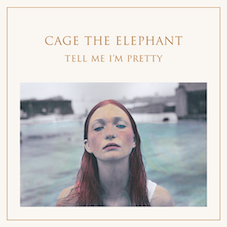
したのビデオを再生してポッドキャストを聞くことができます

したのビデオを再生してポッドキャストを聞くことができます
内容
・ 3 songs from Cage The Elephant's CD “Tell Me I'm Pretty”.
・ Mess Around・ Trouble ・ Portuguese Knife Fight
Cage The Elephant のCDを購入する (Amazon Japan)
Cage The Elephant の曲をダウンロードする(iTunes Japan)
・monologue about Paris
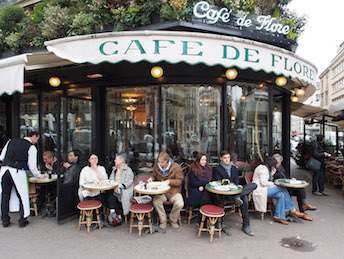
・newspaper reading
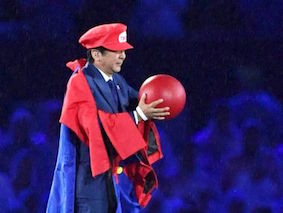
Abe’s Olympic Super Mario drops jaws in Japan
August 18th 2016 TheDaily Star
Japan reacted on Monday with a mixture of surprise, delight and cynicism at the sight of Prime Minister Shinzo Abe dressed up as video game icon Super Mario in a comical cameo at the closing ceremony of the Rio Olympic Games.
Social media sites in Japan immediately reacted to the scenes of Abe wearing a Super Mario costume and most commented in shock at watching the spectacle on television on the other side of the world.
“I was impressed to see a national leader risking his reputation and showing up in cosplay at this world event,” posted a Japanese-language Twitter user.
“He is great.”
Most Japanese had never imagined the normally blue-suited and serious Abe and the moustachioed Mario merging into one.
“I never thought of having Prime Minister Abe play Mario, and I was even more shocked to see him appear from a green pipe,” another Twitter user said.
That was a reference to Abe’s entrance before the big crowd at Rio’s Maracana stadium where plumber Super Mario came out from underground after drilling down from Tokyo into the earth to reach Brazil.
Some voices, however, were very critical.
“He came out of a pipe which was contaminated by radiation,” said one tweet, referring to the Fukushima nuclear power plant that was partly destroyed by a huge 2011 tsunami.
The closing ceremony and transfer of the Olympic flag to Tokyo was the top story in Japan’s evening newspapers, with some including short items on Abe’s transformation into Super Mario.
Tamayo Marukawa, the Japanese minister in charge of the 2020 Tokyo Games, told reporters in Tokyo she did not know about Abe’s plan to portray the popular Nintendo game character.
“Nobody told me about this at all,” she said. I never imagined he would play Mario.”
She then suggested Abe should start calling himself “Shinzo Mario Abe” to raise his global profile.
Abe himself seemed satisfied.
“I wanted to show Japan’s soft power to the world with the help of Japanese characters,” he said.
“I wasn’t sure how the audience would react. But I received so many cheers. I appreciate it.”
本記事へ
・ Mess Around・ Trouble ・ Portuguese Knife Fight
Cage The Elephant のCDを購入する (Amazon Japan)
Cage The Elephant の曲をダウンロードする(iTunes Japan)
・monologue about Paris

・newspaper reading

Abe’s Olympic Super Mario drops jaws in Japan
August 18th 2016 TheDaily Star
Japan reacted on Monday with a mixture of surprise, delight and cynicism at the sight of Prime Minister Shinzo Abe dressed up as video game icon Super Mario in a comical cameo at the closing ceremony of the Rio Olympic Games.
Social media sites in Japan immediately reacted to the scenes of Abe wearing a Super Mario costume and most commented in shock at watching the spectacle on television on the other side of the world.
“I was impressed to see a national leader risking his reputation and showing up in cosplay at this world event,” posted a Japanese-language Twitter user.
“He is great.”
Most Japanese had never imagined the normally blue-suited and serious Abe and the moustachioed Mario merging into one.
“I never thought of having Prime Minister Abe play Mario, and I was even more shocked to see him appear from a green pipe,” another Twitter user said.
That was a reference to Abe’s entrance before the big crowd at Rio’s Maracana stadium where plumber Super Mario came out from underground after drilling down from Tokyo into the earth to reach Brazil.
Some voices, however, were very critical.
“He came out of a pipe which was contaminated by radiation,” said one tweet, referring to the Fukushima nuclear power plant that was partly destroyed by a huge 2011 tsunami.
The closing ceremony and transfer of the Olympic flag to Tokyo was the top story in Japan’s evening newspapers, with some including short items on Abe’s transformation into Super Mario.
Tamayo Marukawa, the Japanese minister in charge of the 2020 Tokyo Games, told reporters in Tokyo she did not know about Abe’s plan to portray the popular Nintendo game character.
“Nobody told me about this at all,” she said. I never imagined he would play Mario.”
She then suggested Abe should start calling himself “Shinzo Mario Abe” to raise his global profile.
Abe himself seemed satisfied.
“I wanted to show Japan’s soft power to the world with the help of Japanese characters,” he said.
“I wasn’t sure how the audience would react. But I received so many cheers. I appreciate it.”
本記事へ
August 2016 - Bob Marley

したのビデオを再生してポッドキャストを聞くことができます

したのビデオを再生してポッドキャストを聞くことができます
July 2016 - Beth Orton

したのビデオを再生してポッドキャストを聞くことができます

したのビデオを再生してポッドキャストを聞くことができます
内容
・ 3 songs from Beth Orton's CD “Kidsticks”.
・ Moon・ 1973 ・ Wave
Beth Orton のCDを購入する (Amazon Japan)
Beth Orton の曲をダウンロードする(iTunes Japan)
・monologue about the British Referendum

・newspaper reading
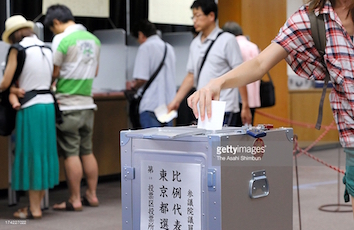
Parties try for the youth vote
June 19, 2016 The Yomiuri Shimbun
Political parties are targeting young voters in their campaign promises for the House of Councillors election on July 10, in response to the new law that took effect on Sunday, lowering the minimum voting age from 20 to 18. There are an estimated 2.4 million people aged 18 and 19 who gained the right to vote.
Election campaigning officially started on June22nd and some of the measures listed in party campaign pledges include reducing the cost of education expenses and better employment conditions.
Launching new measures is often expensive, underscoring the importance of checking whether they can be implemented and how each party intends to fund their promises. All the parties have focused on boosting financial aid to students and with most voters aged 18 and 19 in high school or university this has become an important issue for them.
Measures to establish scholarships are being listed by the Liberal Democratic Party, the Democratic Party, Komeito, the Japanese Communist Party, the Social Democratic Party, the People’s Life Party, the Party for Japanese Kokoro and the New Renaissance Party.
One of these parties, Osaka Ishin no Kai, wrote that it would make tuition free for schools from nurseries to graduate schools after amending the Constitution.
As for employment conditions, the LDP and Komeito set a goal of increasing the minimum wage of average hourly pay from ¥798 to ¥1,000. The JCP and the SDP set a goal of ¥1,500 minimum wage.
Almost all the parties promised to realize an “equal pay for equal work” system in which wages are not based on employment status, as well as to improve working conditions for non-regular workers and raise their status to that of regular workers.
All the parties have promises in their manifestos to lower the age for people to become elected politicians. Both the DP and the SDP want a minimum age of 20 for the House of Representatives and 25 for the House of Councillors. Osaka Ishin no Kai said it would seek electoral system reform to allow smartphones to be used to cast ballots after lowering the minimum age eligibility for both chambers to 18.
Komeito suggested a scheme that would reflect the opinions of young people in its policies by actively appointing them as members of government councils and other positions, and creating a new ministerial post to handle policies relevant to young people.
The PLP pledged to reduce tuition for private high schools and universities, while the PJK wrote it would introduce a voucher system to expand government policies concerning child-rearing and education. The NRP vowed to double the number of young Japanese students studying abroad.
本記事へ
・ Moon・ 1973 ・ Wave
Beth Orton のCDを購入する (Amazon Japan)
Beth Orton の曲をダウンロードする(iTunes Japan)
・monologue about the British Referendum

・newspaper reading

Parties try for the youth vote
June 19, 2016 The Yomiuri Shimbun
Political parties are targeting young voters in their campaign promises for the House of Councillors election on July 10, in response to the new law that took effect on Sunday, lowering the minimum voting age from 20 to 18. There are an estimated 2.4 million people aged 18 and 19 who gained the right to vote.
Election campaigning officially started on June22nd and some of the measures listed in party campaign pledges include reducing the cost of education expenses and better employment conditions.
Launching new measures is often expensive, underscoring the importance of checking whether they can be implemented and how each party intends to fund their promises. All the parties have focused on boosting financial aid to students and with most voters aged 18 and 19 in high school or university this has become an important issue for them.
Measures to establish scholarships are being listed by the Liberal Democratic Party, the Democratic Party, Komeito, the Japanese Communist Party, the Social Democratic Party, the People’s Life Party, the Party for Japanese Kokoro and the New Renaissance Party.
One of these parties, Osaka Ishin no Kai, wrote that it would make tuition free for schools from nurseries to graduate schools after amending the Constitution.
As for employment conditions, the LDP and Komeito set a goal of increasing the minimum wage of average hourly pay from ¥798 to ¥1,000. The JCP and the SDP set a goal of ¥1,500 minimum wage.
Almost all the parties promised to realize an “equal pay for equal work” system in which wages are not based on employment status, as well as to improve working conditions for non-regular workers and raise their status to that of regular workers.
All the parties have promises in their manifestos to lower the age for people to become elected politicians. Both the DP and the SDP want a minimum age of 20 for the House of Representatives and 25 for the House of Councillors. Osaka Ishin no Kai said it would seek electoral system reform to allow smartphones to be used to cast ballots after lowering the minimum age eligibility for both chambers to 18.
Komeito suggested a scheme that would reflect the opinions of young people in its policies by actively appointing them as members of government councils and other positions, and creating a new ministerial post to handle policies relevant to young people.
The PLP pledged to reduce tuition for private high schools and universities, while the PJK wrote it would introduce a voucher system to expand government policies concerning child-rearing and education. The NRP vowed to double the number of young Japanese students studying abroad.
本記事へ
June 2016 - Gregory Porter

したのビデオを再生してポッドキャストを聞くことができます

したのビデオを再生してポッドキャストを聞くことができます
内容
・ 3 songs from Gregory Porter's CD “Take Me To The Alley”.
・ Don't Lose Your Steam・ More Than A Woman ・ Consequence Of Love
Gregory Porter のCDを購入する (Amazon Japan)
Gregory Porter の曲をダウンロードする(iTunes Japan)
・monologue about capsule hotels
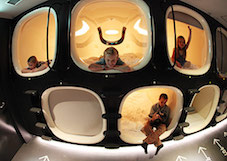
・newspaper reading
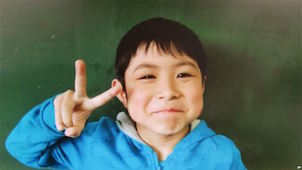
Japanese missing boy is found alive
BBC News 3 June
A seven-year-old Japanese boy who went missing for nearly a week after his parents briefly left him in a forest as punishment has been found safe and well.
Yamato's parents had briefly left him by a wooded road near Nanae in Hokkaido region to punish him for throwing rocks on a family day out. When they went back minutes later he had gone.
He was dressed in only a T-shirt and jeans, in an area where temperatures can dip as low as 9C at night.
"It's been colder than it usually is at this time of year," Ross Findlay, founder of the Niseko Adventure Centre in the region, told the BBC. The area has dense forests, with oak and birch trees and heavy undergrowth.
"It's too hard to walk through so not many people wander into the woods." said Mr Findlay.
"It's like bamboo but quite thick and very hard to get through, so it's a lot different to what other countries might think of a forest. Especially for a small boy if he's lying on the ground with dense undergrowth, it can be very hard to find."
There was also heavy rain during the rescue operation to find him. Yamato appears to have been both lucky and sensible. He was discovered at a military base on Friday, about 5.5km from where he went missing last Sunday.
The army base had already been searched on Monday morning, but the boy was not found there. The search team comprised 180 people and search dogs. Yamato told police he had walked to the military base by himself soon after his parents left him.
"I drank water to survive," he said. "There wasn't anything to eat."
He slept on mattresses spread on the hut floor.
Yamato is now in hospital and doctors who are treating him there say he has only minor injuries, but was suffering from hypothermia.
“Because he had not eaten any food he was very low on energy, which would put him in great danger because of the cold temperatures at night", said one of the doctors.
Hokkaido is also home to brown bears, which can be as big as 2m high.
"The bears generally are very shy, so it's actually better to make more noise so they are aware of your presence, which makes them likely to go the other way," said Mr Findlay from the Niseko Adventure Centre.
"They can usually get quite dangerous if you surprise them instead. However, It's really a miracle that he could still be alive after six days."
本記事へ
・ Don't Lose Your Steam・ More Than A Woman ・ Consequence Of Love
Gregory Porter のCDを購入する (Amazon Japan)
Gregory Porter の曲をダウンロードする(iTunes Japan)
・monologue about capsule hotels

・newspaper reading

Japanese missing boy is found alive
BBC News 3 June
A seven-year-old Japanese boy who went missing for nearly a week after his parents briefly left him in a forest as punishment has been found safe and well.
Yamato's parents had briefly left him by a wooded road near Nanae in Hokkaido region to punish him for throwing rocks on a family day out. When they went back minutes later he had gone.
He was dressed in only a T-shirt and jeans, in an area where temperatures can dip as low as 9C at night.
"It's been colder than it usually is at this time of year," Ross Findlay, founder of the Niseko Adventure Centre in the region, told the BBC. The area has dense forests, with oak and birch trees and heavy undergrowth.
"It's too hard to walk through so not many people wander into the woods." said Mr Findlay.
"It's like bamboo but quite thick and very hard to get through, so it's a lot different to what other countries might think of a forest. Especially for a small boy if he's lying on the ground with dense undergrowth, it can be very hard to find."
There was also heavy rain during the rescue operation to find him. Yamato appears to have been both lucky and sensible. He was discovered at a military base on Friday, about 5.5km from where he went missing last Sunday.
The army base had already been searched on Monday morning, but the boy was not found there. The search team comprised 180 people and search dogs. Yamato told police he had walked to the military base by himself soon after his parents left him.
"I drank water to survive," he said. "There wasn't anything to eat."
He slept on mattresses spread on the hut floor.
Yamato is now in hospital and doctors who are treating him there say he has only minor injuries, but was suffering from hypothermia.
“Because he had not eaten any food he was very low on energy, which would put him in great danger because of the cold temperatures at night", said one of the doctors.
Hokkaido is also home to brown bears, which can be as big as 2m high.
"The bears generally are very shy, so it's actually better to make more noise so they are aware of your presence, which makes them likely to go the other way," said Mr Findlay from the Niseko Adventure Centre.
"They can usually get quite dangerous if you surprise them instead. However, It's really a miracle that he could still be alive after six days."
本記事へ
May 2016 - The Lumineers
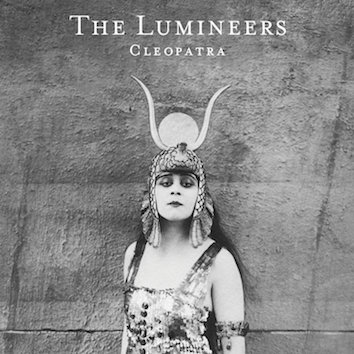
したのビデオを再生してポッドキャストを聞くことができます

したのビデオを再生してポッドキャストを聞くことができます
内容
・ 3 songs from The Lumineers' CD “Cleopatra”.
・ Ophelia・ Cleopatra ・ The Gun Song
Lumineers のCDを購入する (Amazon Japan)
Lumineers の曲をダウンロードする(iTunes Japan)
・monologue about the こころの旅
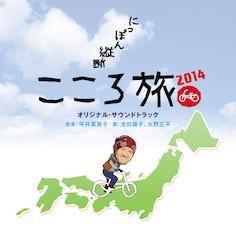
・newspaper reading

Checkered pattern by artist Tokolo chosen as logo for 2020 Tokyo Olympics
Japan Times April 23rd 2016
Tokyo 2020 Olympics organizers on Monday chose logo A ― a stark indigo-and-white checkered circle ― as the games’ replacement emblem after the original design was scrapped last year.
The Tokyo 2020 Logo Selection Committee chose the logo from a shortlist of four following a competition open to any resident of Japan aged over 18. Almost 15,000 entries were submitted.
The winning logo was designed by Asao Tokolo, a 46-year-old artist whose works have featured in several exhibitions and who graduated in architecture from Tokyo Zokei University.
“I was thinking of something like a coloring picture that everyone can add their own color to,” Tokolo said. “White against indigo blue ― it’s a very clean expression. The games will also be held during summertime and I wanted to add some coolness into my design.”
The design comprises 45 interconnecting pieces which form a checkered pattern known as ichimatsu moyou.
The Logo Selection Committee, featuring members drawn from the worlds of sports, design and business, held a vote Monday morning before presenting its recommendation to the Tokyo 2020 executive board for final approval.
Tokolo’s design received 13 votes, while logo B had one, logo C two and logo D five. The winning logo was unanimously approved by the executive board.
Tokolo will be awarded ¥1 million and a ticket to the opening ceremonies of both the 2020 Olympics and Paralympics.
The logo competition was launched last October after the original logo by designer Kenjiro Sano was scrapped. The designer of a Belgian theater logo claimed Sano had plagiarized his work.
“During this process we have tried to convey as much information as possible in order to be as transparent as possible,” said Tokyo 2020 Chief Executive Officer Toshiro Muto.
The Logo Selection Committee chose a shortlist of four designs and four backups in January before subjecting them to rigorous copyright checks. One of the designs on the original shortlist failed to clear the copyright checks and was subsequently dropped.
The committee also invited members of the public to voice their opinion on the shortlist.
“This time the big theme was participation,” said Toshiro Muto.
“This logo selection process was the first of its kind. For us it was a challenging project, but I think it could serve as a model for future selection.”
The committee received opinions from 39,712 members of the public online and an additional 1,804 comments written on postcards.
本記事へ
・ Ophelia・ Cleopatra ・ The Gun Song
Lumineers のCDを購入する (Amazon Japan)
Lumineers の曲をダウンロードする(iTunes Japan)
・monologue about the こころの旅

・newspaper reading

Checkered pattern by artist Tokolo chosen as logo for 2020 Tokyo Olympics
Japan Times April 23rd 2016
Tokyo 2020 Olympics organizers on Monday chose logo A ― a stark indigo-and-white checkered circle ― as the games’ replacement emblem after the original design was scrapped last year.
The Tokyo 2020 Logo Selection Committee chose the logo from a shortlist of four following a competition open to any resident of Japan aged over 18. Almost 15,000 entries were submitted.
The winning logo was designed by Asao Tokolo, a 46-year-old artist whose works have featured in several exhibitions and who graduated in architecture from Tokyo Zokei University.
“I was thinking of something like a coloring picture that everyone can add their own color to,” Tokolo said. “White against indigo blue ― it’s a very clean expression. The games will also be held during summertime and I wanted to add some coolness into my design.”
The design comprises 45 interconnecting pieces which form a checkered pattern known as ichimatsu moyou.
The Logo Selection Committee, featuring members drawn from the worlds of sports, design and business, held a vote Monday morning before presenting its recommendation to the Tokyo 2020 executive board for final approval.
Tokolo’s design received 13 votes, while logo B had one, logo C two and logo D five. The winning logo was unanimously approved by the executive board.
Tokolo will be awarded ¥1 million and a ticket to the opening ceremonies of both the 2020 Olympics and Paralympics.
The logo competition was launched last October after the original logo by designer Kenjiro Sano was scrapped. The designer of a Belgian theater logo claimed Sano had plagiarized his work.
“During this process we have tried to convey as much information as possible in order to be as transparent as possible,” said Tokyo 2020 Chief Executive Officer Toshiro Muto.
The Logo Selection Committee chose a shortlist of four designs and four backups in January before subjecting them to rigorous copyright checks. One of the designs on the original shortlist failed to clear the copyright checks and was subsequently dropped.
The committee also invited members of the public to voice their opinion on the shortlist.
“This time the big theme was participation,” said Toshiro Muto.
“This logo selection process was the first of its kind. For us it was a challenging project, but I think it could serve as a model for future selection.”
The committee received opinions from 39,712 members of the public online and an additional 1,804 comments written on postcards.
本記事へ
April 2016 - Walking On Cars
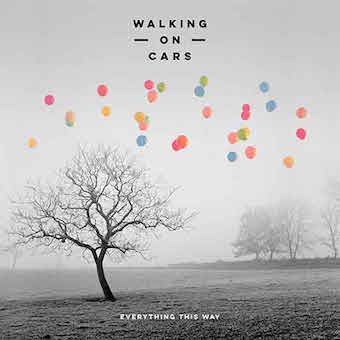
したのビデオを再生してポッドキャストを聞くことができます

したのビデオを再生してポッドキャストを聞くことができます
内容
・ 3 songs from Walking On Cars' CD “Everything This Way”.
・ Tick Tock・ Speeding Cars ・ Catch Me If You Can
Walking On Cars のCDを購入する (Amazon Japan)
Walking On Cars の曲をダウンロードする(iTunes Japan)
・monologue about the terrorist attack in Brussels
・newspaper reading
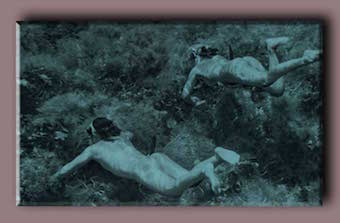
Can ninjas and women divers help Japan?
BBC 30 March 2016 Mariko Oi
Looking for delicacies that mother nature offers. They’re “women of the sea” or “ama” who have been doing this for thousands of years. But their number is shrinking along with demand for their catch. in Japan
In the late 1940s there were over 6,000 “ama” divers in this area alone. Today there are fewer than 1,000. 64-year-old Sayuri has been diving for nearly half a century. She runs a traditional inn where she serves her catch.
“You used to be able to make a living just being an ama,” she tells me. Now she relies on more visitors staying at her inn. “For some business is good, for others it’s not. For us, it’s bad”, she says.
So more divers are turning themselves into tourist attractions, in anticipation of more visitors from overseas. Mie has long been a popular tourist destination for Japanese visitors. The Ise Jingu shrine is the most important in Japan’s national religion, shinto.
Now the government wants to put it on the international map. In 2 months this region will play host to leaders of the 7 major economies of the world, and ahead of it, it is already seeing a sharp rise in foreign visitors.
“Last year the number of foreign visitors to Ise Jingu is almost 100,000 people, which is an increase by 50% of the previous 2 years.” It means much more income for Mie, says the government. “A local think tank has calculated that the summit will bring in nearly a billion dollars to the prefecture over the next 5 years. The luxury boutique resort Aman will be opening soon, and we’re also changing all the signs to English and other foreign languages. We hope to see a continuing boost to the economy, not just from the G7 summit but also from the Olympics in 2020.”
Another dying profession that originates in Mie is ninja, which has always fascinated international audiences. Today only their tourism performance remains. And unless the foreign visitors can truly benefit the entire community, not just big business, “ama” divers could also become just another tourist attraction.
本記事へ
・ Tick Tock・ Speeding Cars ・ Catch Me If You Can
Walking On Cars のCDを購入する (Amazon Japan)
Walking On Cars の曲をダウンロードする(iTunes Japan)
・monologue about the terrorist attack in Brussels
・newspaper reading

Can ninjas and women divers help Japan?
BBC 30 March 2016 Mariko Oi
Looking for delicacies that mother nature offers. They’re “women of the sea” or “ama” who have been doing this for thousands of years. But their number is shrinking along with demand for their catch. in Japan
In the late 1940s there were over 6,000 “ama” divers in this area alone. Today there are fewer than 1,000. 64-year-old Sayuri has been diving for nearly half a century. She runs a traditional inn where she serves her catch.
“You used to be able to make a living just being an ama,” she tells me. Now she relies on more visitors staying at her inn. “For some business is good, for others it’s not. For us, it’s bad”, she says.
So more divers are turning themselves into tourist attractions, in anticipation of more visitors from overseas. Mie has long been a popular tourist destination for Japanese visitors. The Ise Jingu shrine is the most important in Japan’s national religion, shinto.
Now the government wants to put it on the international map. In 2 months this region will play host to leaders of the 7 major economies of the world, and ahead of it, it is already seeing a sharp rise in foreign visitors.
“Last year the number of foreign visitors to Ise Jingu is almost 100,000 people, which is an increase by 50% of the previous 2 years.” It means much more income for Mie, says the government. “A local think tank has calculated that the summit will bring in nearly a billion dollars to the prefecture over the next 5 years. The luxury boutique resort Aman will be opening soon, and we’re also changing all the signs to English and other foreign languages. We hope to see a continuing boost to the economy, not just from the G7 summit but also from the Olympics in 2020.”
Another dying profession that originates in Mie is ninja, which has always fascinated international audiences. Today only their tourism performance remains. And unless the foreign visitors can truly benefit the entire community, not just big business, “ama” divers could also become just another tourist attraction.
本記事へ
March 2016 - Coldplay

したのビデオを再生してポッドキャストを聞くことができます

したのビデオを再生してポッドキャストを聞くことができます
内容
・ 3 songs from Coldplay's CD “A Head Full of Dreams”.
・ Adventure of a Lifetime・ A Head Full of Dreams ・ Hymn for the Weekend
Coldplay のCDを購入する (Amazon Japan)
Coldplay の曲をダウンロードする(iTunes Japan)
・monologue about maths in British schools
questions 1: (entry level) Andy's birthday is May 4th. Betty's birthday is exactly three weeks later. When is Betty's birthday?
A. May 14th B. May 21st C. May 25th
questions 2: (level 1) A recipe on the internet lists ingredients using American cups. One American cup equals 237ml. Which of the following is closest to 4 American cups?
A. 0.5 litres B. 1 litre C. 1.3 litres
questions 3: (level2) The price of a coat is reduced in a sale. If the sale price is £108, what was the original price?
A. £120 B. £138 C. £118
・newspaper reading
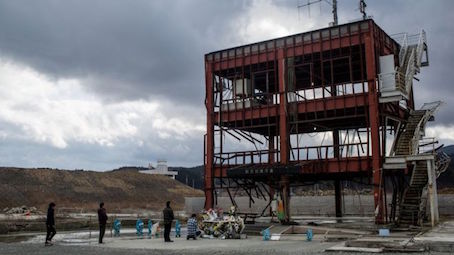
Kiyoshi Kimura, president of Sushi Zanmai, displays a 200kg bluefin tuna at his restaurant near Tsukiji fish market
Shell of Building to Survive as Japan Tsunami Shrine
BBC February 29th 2016
The rusting shell of a public building in Japan will not be demolished after it became a shrine to tsunami victims, with many people comparing its symbolic importance to Hiroshima's atomic bomb memorial.
About 830 residents of the resort town of Minamisanriku, on Japan's north-east coast, died in the earthquake and tsunami of 11 March 2011, and locals have turned the remains of the building into a temporary memorial, the Asahi Shimbun newspaper reports. With the centre of the town almost completely destroyed in the disaster, people bring flowers, prayers and other offerings to the site, which was once the town's disaster management centre, and where 43 people were killed.
But there's been a heated debate over the building's future, with some people saying the remains "reminded them too much of the suffering and heartbreak of the disaster", according to the Asahi newspaper report. This opinion was supported at one time by the town authorities.
However, an expert panel has now decided to preserve the site for the time being, They said that the structure "can send a strong message that is comparable with the message for peace in the Hiroshima's Atomic Bomb Dome". Miyagi prefectural government says it will take ownership of the structure, and wait until at least 2031 before letting future generations decide what to do next. Prefectural officials said that in the case of the Hiroshima Peace Dome it took more than twenty years before a final decision was made on preserving Hiroshima's now iconic memorial.
This idea is supported by Hiroshi Harada, who is a former director of the Hiroshima Peace Memorial Museum. "Such relics serve as a reminder of a tragic event not only for contemporary people but also for future generations." Survivors will eventually die, Mr Harada told Asahi Shimbun, and without preserving a visible relic, "memories will also eventually fade away generation by generation".
本記事へ
・ Adventure of a Lifetime・ A Head Full of Dreams ・ Hymn for the Weekend
Coldplay のCDを購入する (Amazon Japan)
Coldplay の曲をダウンロードする(iTunes Japan)
・monologue about maths in British schools
questions 1: (entry level) Andy's birthday is May 4th. Betty's birthday is exactly three weeks later. When is Betty's birthday?
A. May 14th B. May 21st C. May 25th
questions 2: (level 1) A recipe on the internet lists ingredients using American cups. One American cup equals 237ml. Which of the following is closest to 4 American cups?
A. 0.5 litres B. 1 litre C. 1.3 litres
questions 3: (level2) The price of a coat is reduced in a sale. If the sale price is £108, what was the original price?
A. £120 B. £138 C. £118
・newspaper reading

Kiyoshi Kimura, president of Sushi Zanmai, displays a 200kg bluefin tuna at his restaurant near Tsukiji fish market
Shell of Building to Survive as Japan Tsunami Shrine
BBC February 29th 2016
The rusting shell of a public building in Japan will not be demolished after it became a shrine to tsunami victims, with many people comparing its symbolic importance to Hiroshima's atomic bomb memorial.
About 830 residents of the resort town of Minamisanriku, on Japan's north-east coast, died in the earthquake and tsunami of 11 March 2011, and locals have turned the remains of the building into a temporary memorial, the Asahi Shimbun newspaper reports. With the centre of the town almost completely destroyed in the disaster, people bring flowers, prayers and other offerings to the site, which was once the town's disaster management centre, and where 43 people were killed.
But there's been a heated debate over the building's future, with some people saying the remains "reminded them too much of the suffering and heartbreak of the disaster", according to the Asahi newspaper report. This opinion was supported at one time by the town authorities.
However, an expert panel has now decided to preserve the site for the time being, They said that the structure "can send a strong message that is comparable with the message for peace in the Hiroshima's Atomic Bomb Dome". Miyagi prefectural government says it will take ownership of the structure, and wait until at least 2031 before letting future generations decide what to do next. Prefectural officials said that in the case of the Hiroshima Peace Dome it took more than twenty years before a final decision was made on preserving Hiroshima's now iconic memorial.
This idea is supported by Hiroshi Harada, who is a former director of the Hiroshima Peace Memorial Museum. "Such relics serve as a reminder of a tragic event not only for contemporary people but also for future generations." Survivors will eventually die, Mr Harada told Asahi Shimbun, and without preserving a visible relic, "memories will also eventually fade away generation by generation".
本記事へ
February 2016 - David Bowie

したのビデオを再生してポッドキャストを聞くことができます

したのビデオを再生してポッドキャストを聞くことができます
内容
・ 6 songs from David Bowie's career.
・ Fashion・ Moonage Daydream ・ Heroes ・ Fascination・ Let's Dance ・ Sorrow
David Bowie のCDを購入する (Amazon Japan)
David Bowie の曲をダウンロードする(iTunes Japan)
celebrities write about their favourite David Bowie song

本記事へ
・ Fashion・ Moonage Daydream ・ Heroes ・ Fascination・ Let's Dance ・ Sorrow
David Bowie のCDを購入する (Amazon Japan)
David Bowie の曲をダウンロードする(iTunes Japan)
celebrities write about their favourite David Bowie song

本記事へ
January 2016 - Susanne Sundfor

したのビデオを再生してポッドキャストを聞くことができます

したのビデオを再生してポッドキャストを聞くことができます
内容
・ 3 songs from Susanne Sundfor's CD “10 Love Songs”.
・ Fade Away・ Delirious ・ Slowly
Susanne Sundfor のCDを購入する (Amazon Japan)
Susanne Sundfor の曲をダウンロードする(iTunes Japan)
・monologue about driving Nissan Leaf to Sendai

・newspaper reading
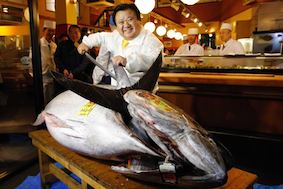
Kiyoshi Kimura, president of Sushi Zanmai, displays a 200kg bluefin tuna at his restaurant near Tsukiji fish market
Japan’s ‘King of Tuna’ lands 200kg whopper for Y14m
Robin Harding Financial Times January 5th 2016
A 200kg bluefin tuna sold for an unbelievable Y14m ($117,200) as Tokyo’s legendary Tsukiji fish market held its final new year’s auction.
Bidding on the first tuna is an annual ritual where Tsukiji buyers display their machismo, showmanship and optimism about the year ahead, but it was especially significant this year because the 80 year-old market is going to relocate to a new site in the autumn.
“It’s a fine tuna. A magnificent tuna. Superb. It’s the last new year auction [at Tsukiji] so this one means a lot,” said Kiyoshi Kimura, owner of the Sushi Zanmai restaurant chain, and winning bidder for the fifth year in a row.
Mr Kimura brands himself as the “King of Tuna” and does his own tuna dissection demonstrations. Cardboard cutouts of his large body holding a tuna saw feature at his company’s restaurants.
The price was well above the $37,500 paid last year but down on the $130,000 that Mr Kimura spent in 2013, when the Hong Kong-based Taste of Japan group competed with him for the highest bid.
Tsukiji Market is one of the Tokyo’s top tourist attractions, but the market location is in the way of Loop Line 2, a new road which will connect the city centre to the 2020 Olympic venues around Tokyo Bay.
Fish traders will therefore relocate to a new site in Toyosu, about 3km to the south, and close to the new Olympic Village. However, there are plans to keep a smaller specialised market in Tsukiji, in order to support the area’s many restaurants.
While the new year’s auction is a reminder of Japan’s enduring love of raw fish, especially bluefin tuna, campaign groups say it highlights the continued decline in stocks of the vulnerable fish.
Overfishing means that stocks of bluefin tuna in the Pacific are 96 per cent below unfished levels, according to the International Scientific Committee for Tuna.
Japan catches the majority of all Pacific bluefin tuna, followed by Mexico and the US, using large nets. According to the Pew Charitable Trusts, the population of bluefin tuna is expected to keep declining through to 2018.
本記事へ
・ Fade Away・ Delirious ・ Slowly
Susanne Sundfor のCDを購入する (Amazon Japan)
Susanne Sundfor の曲をダウンロードする(iTunes Japan)
・monologue about driving Nissan Leaf to Sendai

・newspaper reading

Kiyoshi Kimura, president of Sushi Zanmai, displays a 200kg bluefin tuna at his restaurant near Tsukiji fish market
Japan’s ‘King of Tuna’ lands 200kg whopper for Y14m
Robin Harding Financial Times January 5th 2016
A 200kg bluefin tuna sold for an unbelievable Y14m ($117,200) as Tokyo’s legendary Tsukiji fish market held its final new year’s auction.
Bidding on the first tuna is an annual ritual where Tsukiji buyers display their machismo, showmanship and optimism about the year ahead, but it was especially significant this year because the 80 year-old market is going to relocate to a new site in the autumn.
“It’s a fine tuna. A magnificent tuna. Superb. It’s the last new year auction [at Tsukiji] so this one means a lot,” said Kiyoshi Kimura, owner of the Sushi Zanmai restaurant chain, and winning bidder for the fifth year in a row.
Mr Kimura brands himself as the “King of Tuna” and does his own tuna dissection demonstrations. Cardboard cutouts of his large body holding a tuna saw feature at his company’s restaurants.
The price was well above the $37,500 paid last year but down on the $130,000 that Mr Kimura spent in 2013, when the Hong Kong-based Taste of Japan group competed with him for the highest bid.
Tsukiji Market is one of the Tokyo’s top tourist attractions, but the market location is in the way of Loop Line 2, a new road which will connect the city centre to the 2020 Olympic venues around Tokyo Bay.
Fish traders will therefore relocate to a new site in Toyosu, about 3km to the south, and close to the new Olympic Village. However, there are plans to keep a smaller specialised market in Tsukiji, in order to support the area’s many restaurants.
While the new year’s auction is a reminder of Japan’s enduring love of raw fish, especially bluefin tuna, campaign groups say it highlights the continued decline in stocks of the vulnerable fish.
Overfishing means that stocks of bluefin tuna in the Pacific are 96 per cent below unfished levels, according to the International Scientific Committee for Tuna.
Japan catches the majority of all Pacific bluefin tuna, followed by Mexico and the US, using large nets. According to the Pew Charitable Trusts, the population of bluefin tuna is expected to keep declining through to 2018.
本記事へ



